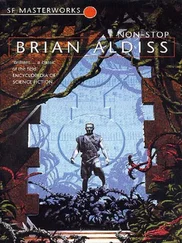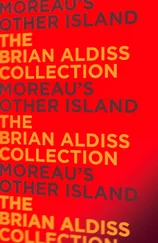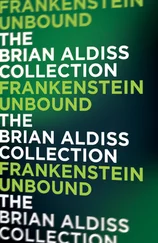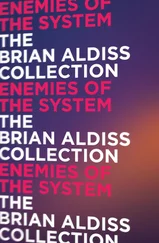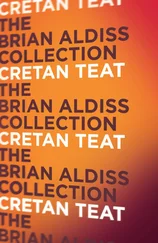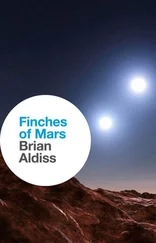Brian Aldiss - White Mars
Здесь есть возможность читать онлайн «Brian Aldiss - White Mars» весь текст электронной книги совершенно бесплатно (целиком полную версию без сокращений). В некоторых случаях можно слушать аудио, скачать через торрент в формате fb2 и присутствует краткое содержание. Год выпуска: 1999, ISBN: 1999, Издательство: Little, Brown UK, Жанр: Фантастика и фэнтези, на английском языке. Описание произведения, (предисловие) а так же отзывы посетителей доступны на портале библиотеки ЛибКат.
- Название:White Mars
- Автор:
- Издательство:Little, Brown UK
- Жанр:
- Год:1999
- ISBN:0-316-85243-0
- Рейтинг книги:5 / 5. Голосов: 1
-
Избранное:Добавить в избранное
- Отзывы:
-
Ваша оценка:
- 100
- 1
- 2
- 3
- 4
- 5
White Mars: краткое содержание, описание и аннотация
Предлагаем к чтению аннотацию, описание, краткое содержание или предисловие (зависит от того, что написал сам автор книги «White Mars»). Если вы не нашли необходимую информацию о книге — напишите в комментариях, мы постараемся отыскать её.
White Mars — читать онлайн бесплатно полную книгу (весь текст) целиком
Ниже представлен текст книги, разбитый по страницам. Система сохранения места последней прочитанной страницы, позволяет с удобством читать онлайн бесплатно книгу «White Mars», без необходимости каждый раз заново искать на чём Вы остановились. Поставьте закладку, и сможете в любой момент перейти на страницу, на которой закончили чтение.
Интервал:
Закладка:
We lived under stringent laws on Mars, laws to which every visitor was immediately introduced. The underground water source would not last for ever. While it did last, a proportion of it underwent the electrolysis process to supply us with necessary oxygen to breathe. Buffer gases were more difficult to come by, although argon and nitrogen were filched from the thin atmosphere. The pressure in the domes was maintained at 5.5 psi.
It will be appreciated that these vital arrangements absorbed much electricity. Technicians were always alert for ways of extending our resources. To begin with they relied on heat-exchange pumps as generators, and photovoltaic cells.
I have to tell myself that I am a serious person, interested in serious matters. I will not speak of my increasing affection for Kathi Skadmorr, who after all is a marginal person like me, or my admiration for Tom Jefferies, who is a central person unlike me. Instead, I will talk about worms.
In one Amazonis laboratory was a precious Martian possession—“the farm’, a wit called it. Dreiser Hawkwood had introduced it; his side interest was biochemistry. The farm was contained in a box two metres square and a metre and a half deep. In it was rich top soil from the Calcutta Botanical Gardens, expensively imported by courtesy of Thomas Gunther and his EUPACUS associates. In the box grew a small weigela and a sambucus. Below, in the soil, were worms of the perichaeta species, working away and throwing up their castings.
The metabolism of the worms had been accelerated. Their digestion and ejection of soil was rapid. They worked at dragging down the leaves fallen from the plants, thus enriching the soil with vegetable and microbial life. The enriched soil was to be set in a bed inside one of the domes to provide the first “natural’-grown vegetables. The tilth would eventually cover acres of specially prepared regolith, breaking it down under greenhouse domes into arable land.
From this modest beginning in the farm, great things were to come. It is doubtful if Mars would ever have become more than marginally habitable without that lowly and despised creature, the earthworm, which Charles Darwin regarded so highly, not dreaming that it would one day transform an alien planet as it had transformed Earth itself.
This new agricultural revolution, intended to supplement the food grown in chemical vats, was assisted by work carried out high above the Martian crust.
Mars has two small satellites that chase across the sky, Swift and Laputa. Early astronomers had bestowed on these two small bodies the unbecoming names of Phobos and Diemos. Swift unwearyingly rises and sets twice in a Martian day. Landings have been made on both satellites. On Swift have been found metallic fragments, presumably the remains of an unsuccessful twentieth-century Russian mission.
Working from a small base on Swift, a series of large PIRs—polymer inflatable reflectors—was set in orbit about Mars to reflect much needed sunlight to the surface. The PIRs are cheap, and easily destroyed by space debris, but equally easily replaced.
The PIRs can be seen in daylight or at night, when they shine brightly unless undergoing occasional eclipse.
It will be deduced from these developments that, despite all the protests, Mars was slowly and inevitably being drawn nearer to terraforming.
Despite all the regulations, the pressure to live brought this change about.
The observatory built on Tharsis Shield near Olympus Mons continued to yield results. The meteorite watch station became operative. The new branch of astrophysics studying the gas giants was officially named jovionics. The telescopes of the observatory tracked many asteroids. Dedication to research was a feature of the scientific atmosphere on Mars. There was little to distract the scientists, as the asteroid-watchers sought to prove the small bodies were the remains of a planet that, before being torn apart by forces of gravity, occupied an orbit between Mars and Jupiter.
Studies of magneto-gravitic irregularities revealed a remarkably high gravity reading for the region near Olympus Mons. I discovered that Kathi was interested in this. No such anomaly existed on Earth, she claimed. She was reading many scientific papers on her Ambient, and told me she believed there was a connection between magneto-gravitic influences and consciousness, so that at present she was looking for a dimensionless quality, but I did not understand her.
When I questioned this connection she believed in, she explained patiently that there were electric and magnetic fields. Whereas electric charges were the direct sources of electric fields, as far as was known there were no equivalent magnetic charges—that is to say, no magnetic monopoles. The influence of hidden-symmetry monopoles on consciousness was subtle and elusive—or appeared to be so as yet. The sophistry underlying the apparently simple laws of the physical universe, the exceptional qualities of many elementary particles, might lead one to suspect the universe of possessing a teleological character.
She was continuing the explanation when I had to admit I could follow her no further.
With a sympathetic smile, Kathi nodded her head and said, “Who can?!”
She became inquisitive about my beloved Other in Chengdu. Feeling sorry I had mentioned her, I was not very forthcoming. Later, I saw she was interested in the question of consciousness; the existence of my Other, so simple to me, seemed to raise complex questions in her mind.
There seemed little for biochemists and xenobiologists to do once it was agreed that Mars held no life and that its early life forms—archebacteria and so forth—had perished many millions of years before mankind appeared on Earth.
The heliopause, with its strange turbulences, was studied. While Mars was regarded as a completely dead world, indications of life on Ganymede, one of the moons of Jupiter already mentioned, were observed by new instruments.
But I am getting ahead of our history again. Things were well enough for the Martian-terrestrial relationship, until the disaster occurred that changed the situation, entirely and for ever.
5
You need to remember how complex and ill judged terrestrial affairs were up to this period.
Among the harsh pleasures of Mars were many negative ones. I was particularly glad to escape the constant surveillance to which we had been subject. On Earth crime rates were such that every city, every road, every apartment house and condominium and almost every room in those buildings was watched day and night by the glass eyes of security cameras. The sellers of masks profited accordingly, and crime thrived. Oppression and blackmail prospered even more.
The mansion of Thomas Gunther was well equipped with surveillance devices, including those of the latest type. The camgun for instance, would fire yards of adhesive at any visitor to the building whose characteristics were not held in its computer.
Not all forms of crime yielded to inspection. Fraud and corruption could take place in broad daylight, with smiles to outface any camera. Smiles had been worn like masks in the upper echelons of the EUPACUS consortium.
The collapse of the entire enterprise began with a seemingly small event in 2066. A senior clerk in the tall ivory-white tower in Seoul that was the main EUPACUS building was caught embezzling.
The clerk was sacked. No charges were brought against him. He was found dead in his apartment two days later. Possibly it was suicide, possibly murder. But an electronic message was released, triggered by the stoppage of the clerk’s electronic heart, to be received at the North American Supreme Court of Justice. It led the court to uncover a massive misappropriation of funds by EUPACUS directors. In comparison the clerk’s misdemeanours were nugatory.
Читать дальшеИнтервал:
Закладка:
Похожие книги на «White Mars»
Представляем Вашему вниманию похожие книги на «White Mars» списком для выбора. Мы отобрали схожую по названию и смыслу литературу в надежде предоставить читателям больше вариантов отыскать новые, интересные, ещё непрочитанные произведения.
Обсуждение, отзывы о книге «White Mars» и просто собственные мнения читателей. Оставьте ваши комментарии, напишите, что Вы думаете о произведении, его смысле или главных героях. Укажите что конкретно понравилось, а что нет, и почему Вы так считаете.

